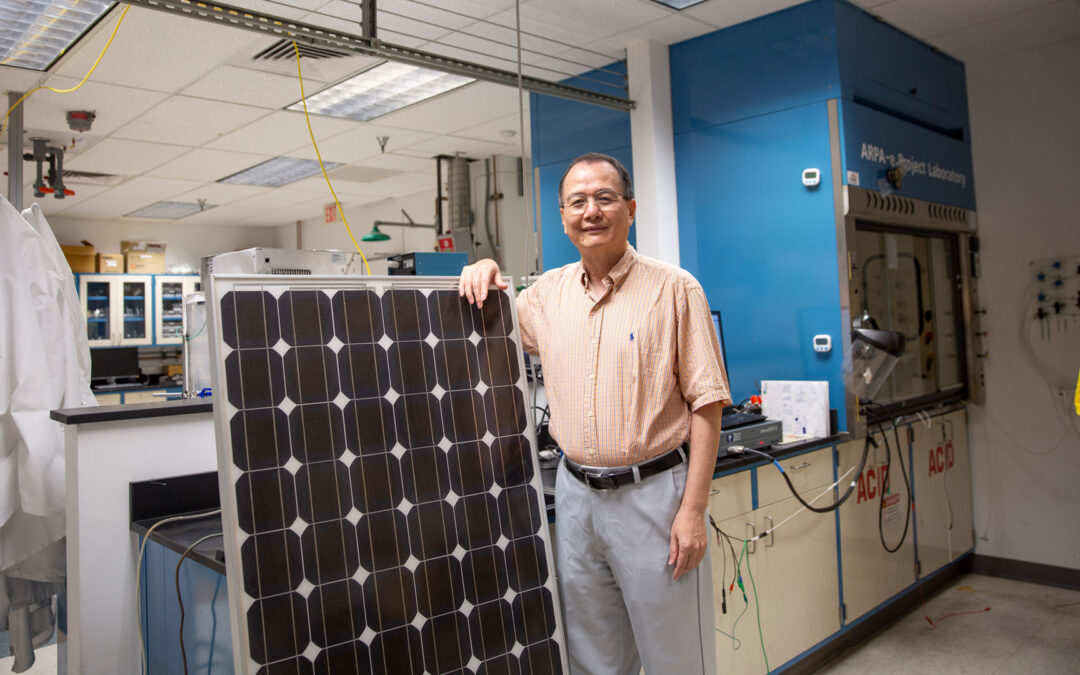With climate change becoming an increasingly dire problem, solar, or photovoltaic, power generation can help to remedy the problem as a zero-emission source of electricity. Despite providing green energy, solar panels aren’t without their environmental drawbacks: They’re difficult and expensive to recycle.
“For the last 40 years, the focus has been on solar panel efficiency, cost and reliability,” says Meng Tao, a professor of electrical engineering in the Ira A. Fulton Schools of Engineering at Arizona State University. “I was one of the pioneers who said, ‘We need recycling technologies.’”
After a panel’s life expectancy, which ranges from about 25 to 30 years, is reached and the panel is no longer useful, it’s typically added to the large amounts of trash that go into landfills and incinerators every year. As solar technology use continues to increase, the International Renewable Energy Agency estimates that by the 2050s, end-of-life solar panels will result in 5.5 to 6 million metric tons of waste per year.
Tao, a faculty member in the School of Electrical, Computer and Energy Engineering, part of the Fulton Schools, set out to enhance economical circularity — the reusability of products and their base materials — by recycling them. While his efforts thus far have focused on recycling methods for existing panel designs, he found limitations to how much of the material recycled from existing solar panels can be.
Tao then decided to increase panel circularity by collaborating with experts in a variety of areas. The result was five recommended changes to panel designs that will make them easier and more cost-efficient to recycle that are detailed in a paper in the One Earth scientific journal.
